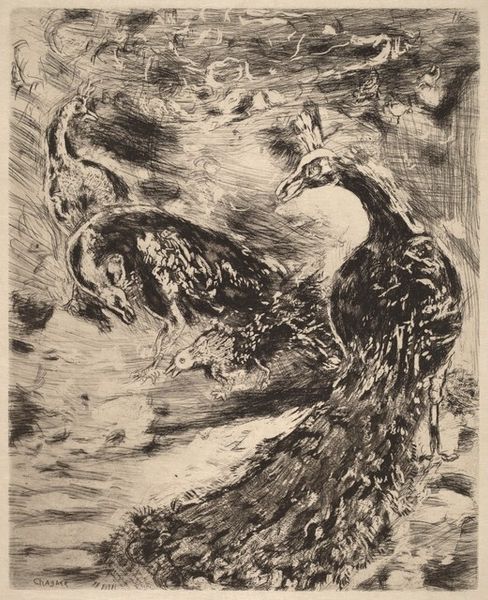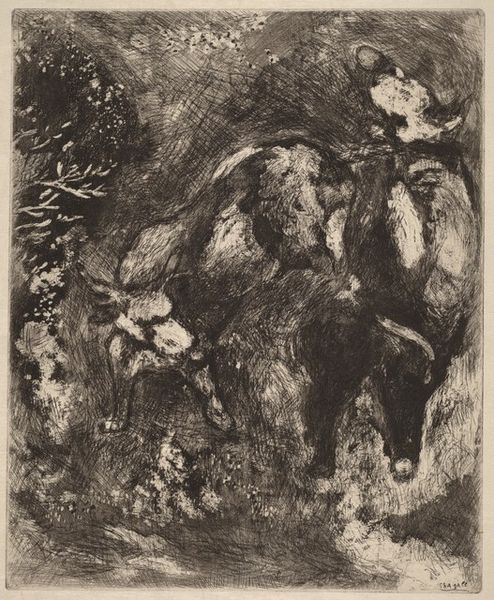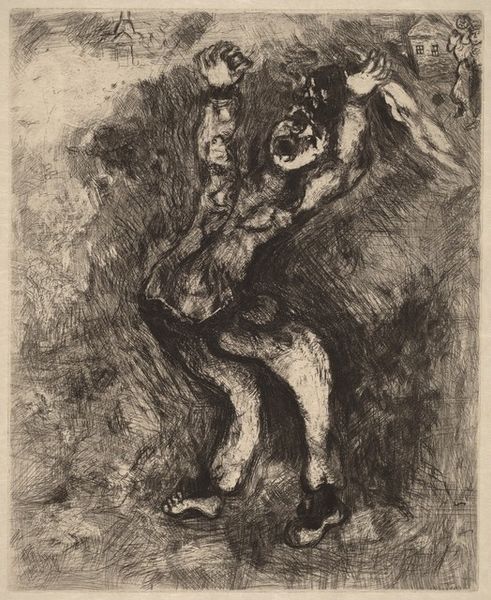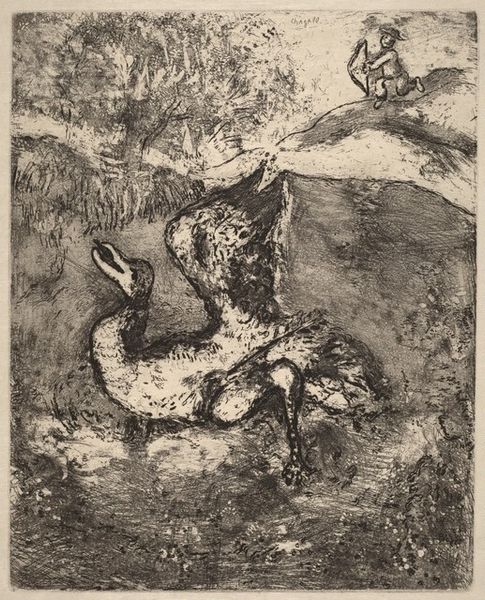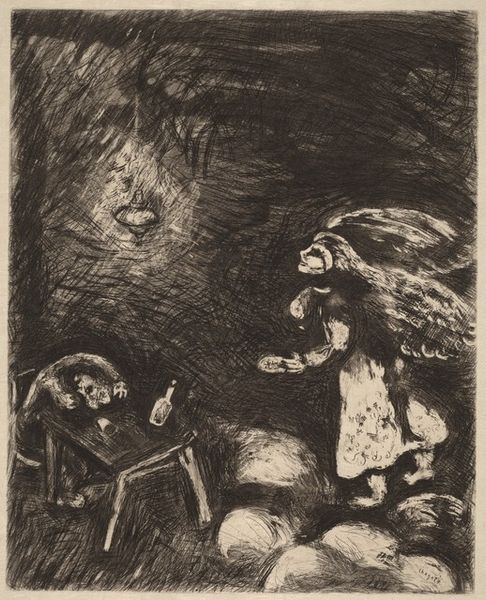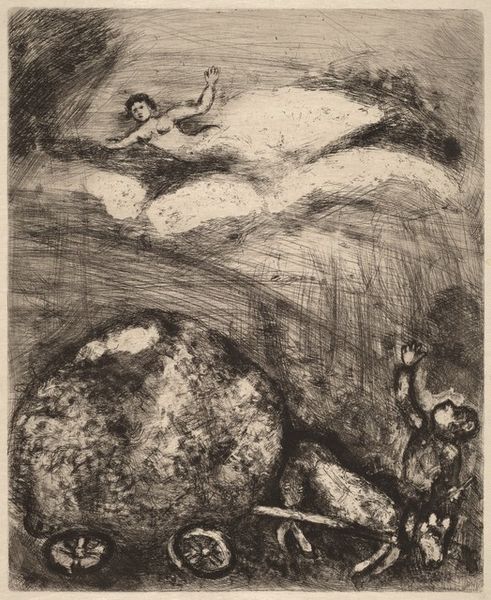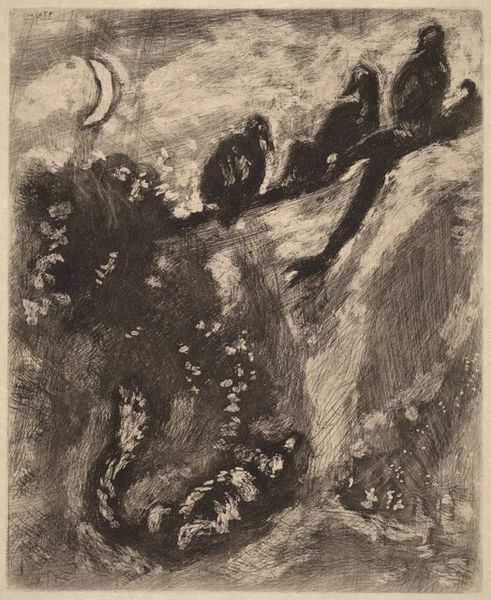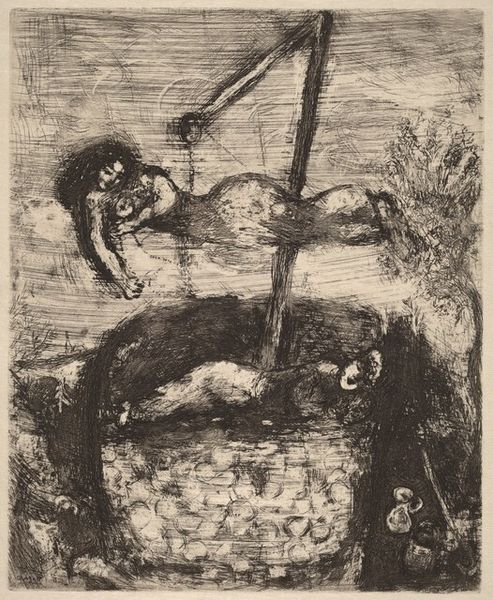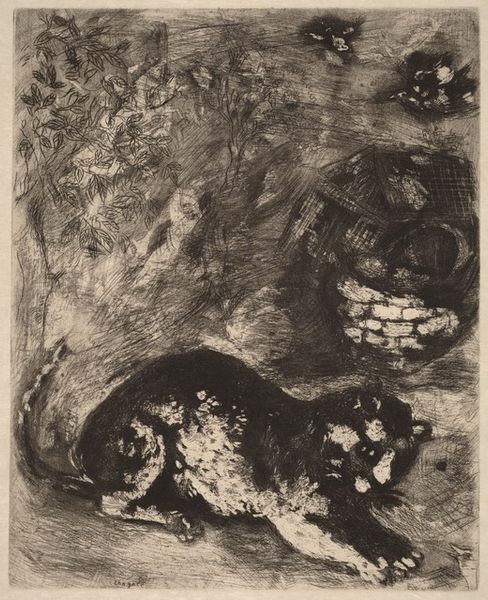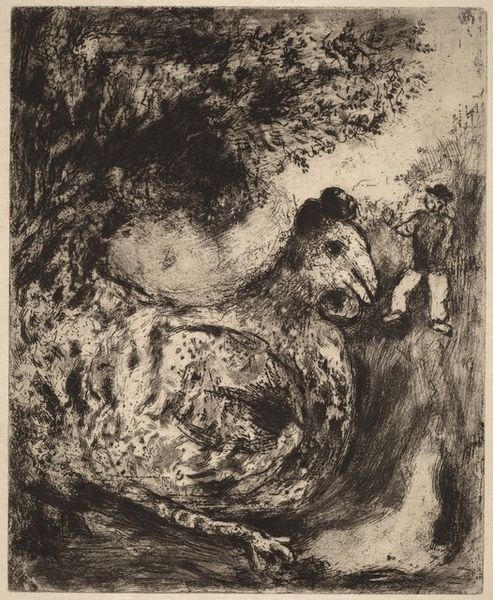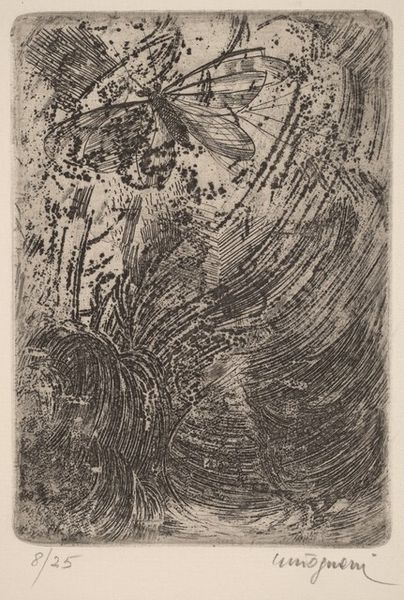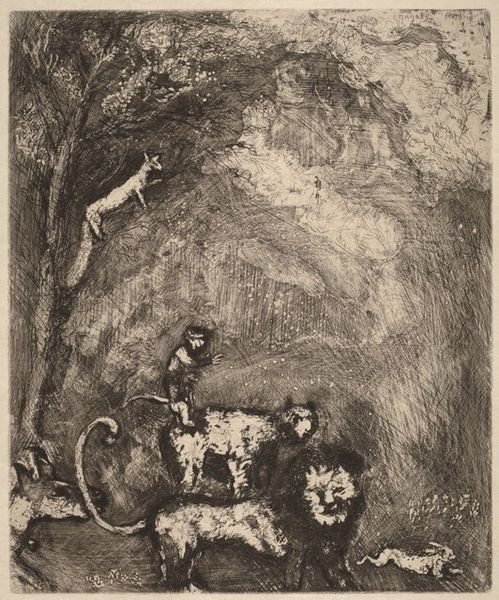
print, etching, engraving
#
medieval
#
narrative-art
# print
#
etching
#
figuration
#
engraving
Copyright: National Gallery of Art: CC0 1.0
Editor: This is "The Wolf and the Stork," an etching and engraving by Marc Chagall, created sometime between 1927 and 1930. The monochromatic tones and stark contrasts give it quite a haunting mood. What do you make of this piece? Curator: Ah, Chagall, a painter of dreams! What I see here, beyond the immediate depiction of the fable, is a kind of dance between vulnerability and cunning. The stork, usually a symbol of good fortune, is now an unwilling participant in this uncomfortable ballet with the wolf. It's like watching a silent film where the punchline is a life lesson learned the hard way. Doesn't the stork look rather surprised by the whole ordeal? Editor: I guess it does! So, are you saying Chagall uses these well-known figures to… question them? Curator: Precisely! Chagall isn't just illustrating a story; he's probing the uneasy relationships between creatures – humans, animals, mythical beings – all coexisting in a world tinged with both wonder and despair. Look at how he renders the wolf’s face: a bizarre combination of menace and helplessness. Who is the real victim here? Perhaps they both are. What do you think the original fable tells us, compared to how you see it represented here? Editor: I suppose the fable has a clearer moral. Maybe Chagall’s version is about how things are never so clear cut. Curator: Exactly! It’s that ambiguity that makes Chagall so captivating, don’t you think? Editor: I completely agree. Thanks for helping me see so much more than just a story etched in monochrome! Curator: My pleasure. It’s in these kinds of stories – or dreams – that we find slivers of truth, aren't they?
Comments
No comments
Be the first to comment and join the conversation on the ultimate creative platform.
